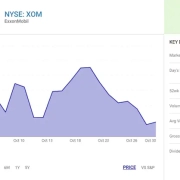Estate planning is a crucial aspect of managing and preserving wealth for future generations. When it comes to oil and gas interests, estate planning becomes even more significant due to the unique complexities and substantial value these assets can represent. Properly handling oil and gas interests in estate planning ensures that the rights, royalties, and income streams associated with these resources are efficiently transferred and managed. This article explores the intricacies of estate planning with oil and gas interests, highlighting essential considerations, strategies, and best practices for effectively incorporating these assets into a comprehensive estate plan.
Understanding Oil and Gas Interests and Estate planning
Oil and gas interests refer to the ownership rights associated with the exploration, extraction, and production of oil and gas resources. These interests can take various forms, including mineral rights, royalty interests, working interests, and overriding royalty interests. Each type of interest carries distinct legal, financial, and operational implications, making it essential to understand the nature and value of the assets involved.
Mineral Rights
Mineral rights grant the owner the authority to explore, extract, and sell minerals beneath the surface of a property. These rights can be severed from surface rights, allowing different parties to own the surface land and the underlying minerals. When included in an estate, mineral rights can generate substantial income through lease agreements and royalties from production.
Royalty Interests
Royalty interests entitle the owner to a percentage of the revenue generated from the extraction and sale of oil and gas resources. Unlike working interests, royalty interest owners do not bear the costs associated with exploration and production. These interests provide a passive income stream, making them attractive assets for estate planning.
Working Interests
Working interests involve active participation in the exploration, development, and production of oil and gas resources. Owners of working interests share in the costs and risks of production but also receive a proportionate share of the revenue. These interests require ongoing management and involvement, which should be considered in estate planning.
Overriding Royalty Interests
Overriding royalty interests are similar to royalty interests but are typically created when a working interest owner assigns a portion of their revenue to another party. These interests do not involve ownership of the mineral rights themselves but provide a share of the production revenue. Overriding royalty interests can be valuable assets in an estate plan.
Importance of Estate Planning with Oil and Gas Interests
Effective estate planning for oil and gas interests ensures that these valuable assets are managed, preserved, and transferred according to the owner’s wishes. Without proper planning, oil and gas interests can become entangled in legal disputes, incur unnecessary taxes, and lose value due to mismanagement. Key benefits of estate planning with oil and gas interests include:
Asset Protection
Estate planning helps protect oil and gas interests from potential creditors, legal challenges, and other risks. By establishing trusts, limited liability companies (LLCs), or other legal structures, owners can shield these assets from personal liabilities and ensure their long-term preservation.
Tax Efficiency
Proper estate planning can minimize the tax burden associated with transferring oil and gas interests to heirs or beneficiaries. Strategies such as gifting, establishing trusts, and leveraging valuation discounts can help reduce estate and gift taxes, ensuring that more of the asset’s value is retained within the family.
Continuity and Management
Estate planning ensures the seamless transition of management and ownership of oil and gas interests. By designating successors, creating management plans, and establishing clear instructions, owners can avoid disruptions and ensure that the assets continue to generate income and value for future generations.
Avoiding Probate
Incorporating oil and gas interests into an estate plan can help avoid probate, a lengthy and public legal process. Using tools such as revocable living trusts, transfer-on-death deeds, and beneficiary designations, owners can transfer these assets directly to heirs without the need for probate proceedings.
Key Considerations in Estate Planning with Oil and Gas Interests
When incorporating oil and gas interests into an estate plan, several key considerations must be taken into account to ensure a comprehensive and effective strategy.
Valuation of Oil and Gas Interests
Accurate valuation of oil and gas interests is crucial for effective estate planning. These assets can fluctuate in value based on factors such as production levels, market prices, and regulatory changes. Engaging a qualified appraiser with expertise in the oil and gas industry is essential to determine the fair market value of these interests.
Legal and Regulatory Compliance
Oil and gas interests are subject to a complex web of legal and regulatory requirements. Ensuring compliance with state and federal laws, lease agreements, and environmental regulations is vital to avoid legal disputes and penalties. Consulting with an attorney specializing in oil and gas law can help navigate these complexities and ensure compliance.
Succession Planning
Succession planning is a critical component of estate planning with oil and gas interests. Identifying and preparing successors to manage these assets is essential to ensure their continued productivity and value. This may involve training family members, appointing professional managers, or establishing clear management structures within trusts or LLCs.
Income and Cash Flow Management
Oil and gas interests can generate significant income through royalties and production revenue. Managing this income effectively is crucial to ensure that it supports the needs of the estate and beneficiaries. Establishing mechanisms for income distribution, budgeting, and investment can help maintain financial stability and growth.
Impact of Taxes
Taxes play a significant role in estate planning with oil and gas interests. Federal and state estate taxes, gift taxes, and income taxes can all impact the transfer and management of these assets. Utilizing tax-efficient strategies, such as gifting, charitable donations, and leveraging tax exemptions, can help minimize the tax burden.
Charitable Giving
Incorporating charitable giving into an estate plan can provide tax benefits and support philanthropic goals. Donating oil and gas interests to charitable organizations can help reduce estate and income taxes while contributing to causes that align with the owner’s values.
Environmental and Social Responsibility
Considering the environmental and social impact of oil and gas interests is increasingly important in estate planning. Owners may wish to incorporate sustainable practices, support environmental initiatives, and address community concerns as part of their estate planning strategy. Establishing guidelines for responsible resource management and engaging with stakeholders can enhance the legacy of these assets.
Estate Planning Strategies for Oil and Gas Interests
Several strategies can be employed to effectively incorporate oil and gas interests into an estate plan. These strategies should be tailored to the specific needs and goals of the owner and their family.
Creating Trusts
Trusts are a powerful tool for estate planning with oil and gas interests. They provide flexibility, asset protection, and tax benefits. Different types of trusts, such as revocable living trusts, irrevocable trusts, and charitable remainder trusts, can be used to achieve various estate planning objectives.
Revocable living trusts allow the owner to retain control over the assets during their lifetime while ensuring a smooth transition to beneficiaries upon death. Irrevocable trusts can help reduce estate taxes by removing the assets from the owner’s taxable estate. Charitable remainder trusts provide income to the owner or beneficiaries for a specified period, with the remaining assets eventually going to a designated charity.
Establishing LLCs
Limited liability companies (LLCs) can be used to manage and protect oil and gas interests within an estate plan. By transferring these assets into an LLC, owners can limit personal liability, streamline management, and facilitate the transfer of ownership interests. LLCs also offer flexibility in terms of management structure and income distribution.
Gifting Strategies
Gifting oil and gas interests during the owner’s lifetime can be an effective way to reduce the taxable estate and transfer wealth to heirs. Utilizing the annual gift tax exclusion, lifetime gift tax exemption, and valuation discounts can help minimize gift taxes. Gifting strategies should be carefully planned to balance tax efficiency with the owner’s financial needs and goals.
Family Limited Partnerships
Family limited partnerships (FLPs) can be used to centralize the management of oil and gas interests and facilitate the transfer of ownership to future generations. By establishing an FLP, the owner can transfer limited partnership interests to heirs while retaining control as the general partner. This structure provides asset protection, potential valuation discounts, and a mechanism for orderly succession planning.
Life Insurance
Life insurance can play a vital role in estate planning with oil and gas interests. It can provide liquidity to cover estate taxes, debts, and other expenses, ensuring that the oil and gas interests do not need to be sold under unfavorable conditions. Life insurance proceeds can also be used to equalize inheritances among heirs, particularly when oil and gas interests represent a significant portion of the estate.
Professional Management
Engaging professional management services can help ensure the efficient and effective management of oil and gas interests within an estate plan. Professional managers bring expertise in areas such as lease negotiation, production monitoring, regulatory compliance, and income distribution. Their involvement can help maximize the value of these assets and reduce the burden on family members.
Regular Review and Updates
Estate planning is not a one-time event but an ongoing process. Regularly reviewing and updating the estate plan is essential to account for changes in family circumstances, asset values, tax laws, and personal goals. Periodic reviews ensure that the plan remains aligned with the owner’s wishes and continues to provide the desired benefits.
Case Studies and Real-World Examples (Estate planning)
Examining real-world examples of estate planning with oil and gas interests can provide valuable insights into effective strategies and common pitfalls. Several case studies highlight the diverse approaches taken by different families and individuals to manage and transfer these valuable assets.
Family Legacy and Trusts
A family with substantial oil and gas interests used a combination of revocable living trusts. Irrevocable trusts to ensure the seamless transfer of assets to future generations. The revocable living trusts allowed the family to retain control during their lifetimes while avoiding probate. Irrevocable trusts were established to reduce estate taxes and protect the assets from potential creditors.
The family also engaged professional managers to oversee the oil and gas interests. It ensures that the assets continue to generate income and value. Regular family meetings and clear communication helped maintain a cohesive approach to asset management and succession planning.
Charitable Giving and Environmental Stewardship
An individual with significant oil and gas interests incorporated charitable giving and environmental stewardship into their estate plan. By establishing a charitable remainder trust, they were able to receive income from the assets during their lifetime. Eventually, it benefits a environmental organization. This approach provided tax benefits and supported the individual’s commitment to sustainable resource management.
The estate plan also included guidelines for responsible extraction practices and community engagement. It is ensuring that the oil and gas interests are manageable. It is in a way that aligned with the individual’s values. Regular reviews and updates to the plan helped address changing environmental concerns and philanthropic goals.
Business Succession and LLCs
A business owner with working interests in several oil and gas projects used limited liability companies (LLCs). It is to facilitate business succession and estate planning. By transferring the working interests into LLCs, the owner was able to limit personal liability and streamline management.
The LLC structure allowed for the transfer of ownership interests to family members while retaining centralized control. Clear succession plans and training programs were established to prepare the next generation for management responsibilities. Regular financial reviews and professional advice helped optimize the income and value generated by the oil and gas interests.
Estate planning with oil and gas interests requires careful consideration of legal, financial, and operational factors. Owners can ensure the preservation and efficient transfer of wealth to future generations. It is by understanding the nature of these assets and employing effective strategies, oKey considerations such as valuation, legal compliance, succession planning, and tax efficiency are essential to developing a comprehensive estate plan.
Utilizing tools such as trusts, LLCs, gifting strategies, and professional management can help achieve estate planning goals while protecting and maximizing the value of oil and gas interests. Regular reviews and updates to the estate plan ensure its continued relevance and effectiveness in light of changing circumstances and goals.
By taking a proactive and informed approach to estate planning with oil and gas interests, individuals and families can secure their financial legacy and support the responsible management of valuable natural resources.
If you have further questions related to Estate planning, reach out to us here.










